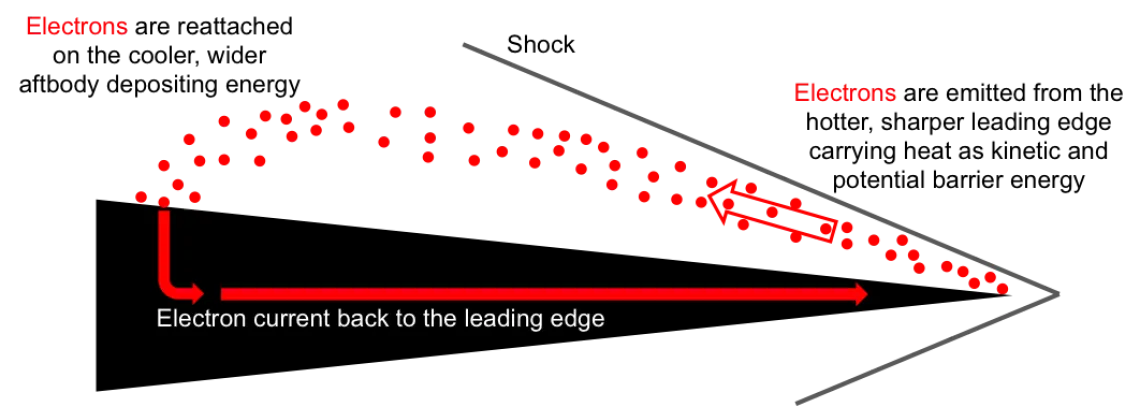Computational Hypersonics and Nonequilibrium
The Computational Hypsersonics and Nonequilibrium Laboratory is active in the development and application of physical models and numerical methods for the simulation of complex gas flows including:
- Nonequilibrium Flows
- Low-Temperature Plasma Flows
- Hypersonic Flows
- Electron Transpiration Cooling
- Fluid-Thermal-Structural Interactions
CHANL is an active member of the Arizona Research Center of Hypersonics (ARCH), where the University of Arizona is a global leader in the field of hypersonics. Ideally situated in the heart of aerospace and defense industry, the institution boasts a unique array of resources, laboratories and world-renowned researchers, dedicated to breaking new ground and pushing the boundaries of what is possible.
Hypersonics
In aerodynamics, flight speeds are categorized into regimes of flight or flows, which are subsonic, transonic, supersonic, and hypersonic. The keyword here is the word sonic, which refers to the speed of sound. The flight speeds are divided into these regimes because the flow behaves differently in each one and often require different approaches to accurately model them. If an object is traveling through the air well below the speed of sound, it is referred to as subsonic flight, or low-speed flight. As the speed of the object increases and approaches the speed of sound, some of the flow over the object will become faster than the speed of sound, but not all of it (both subsonic and supersonic flow). Supersonic flight is where the flow is entirely faster than the speed of sound. Hypersonic flight speed is generally described as being very supersonic. There is no discrete value at which the flow becomes hypersonic and is more of a regime where certain physical flow phenomena become more important. As a rule of thumb, speeds greater than five times the speed of sound are considered hypersonic. The Mach number defines how fast an object is traveling in reference to the speed of sound. For example, flight occurring at five times the speed of sound would be Mach 5. The flow phenomena characterized by hypersonic flow include thin shock layers, an entropy layer, viscous interaction, and low-density, high-temperature flows. The high-temperature flow results in real-gas effects becoming important, and the flow being in state of thermal nonequilibrium and chemically reactive.

